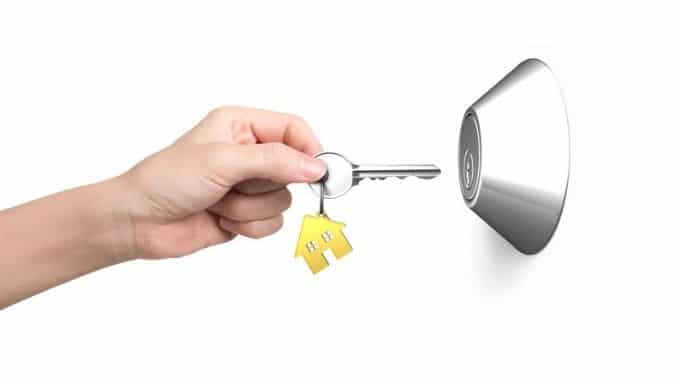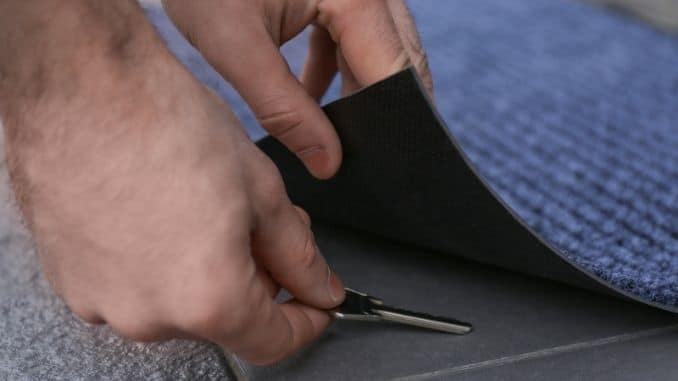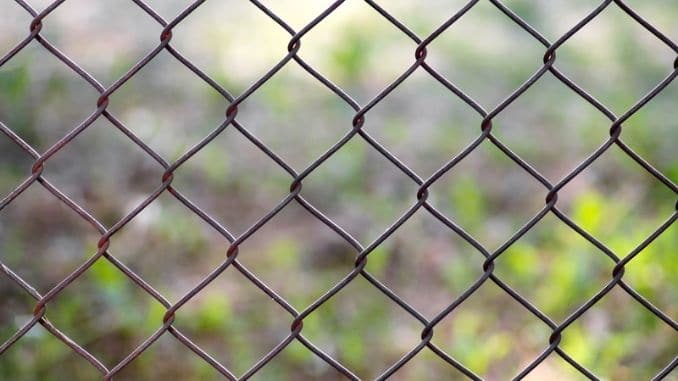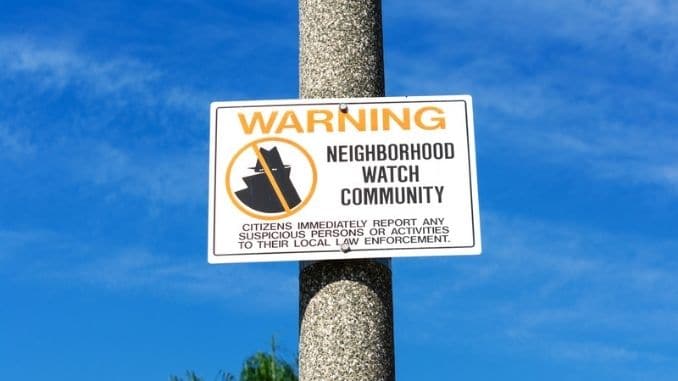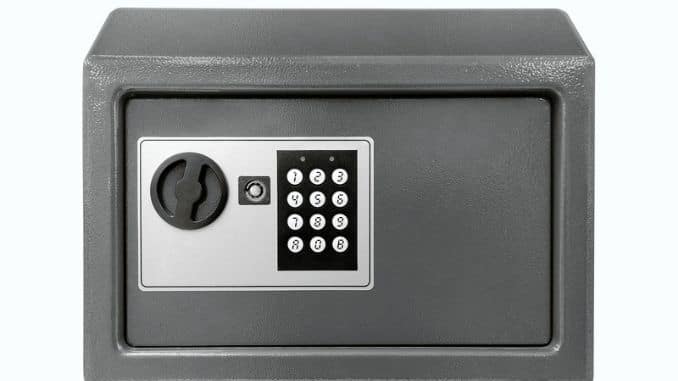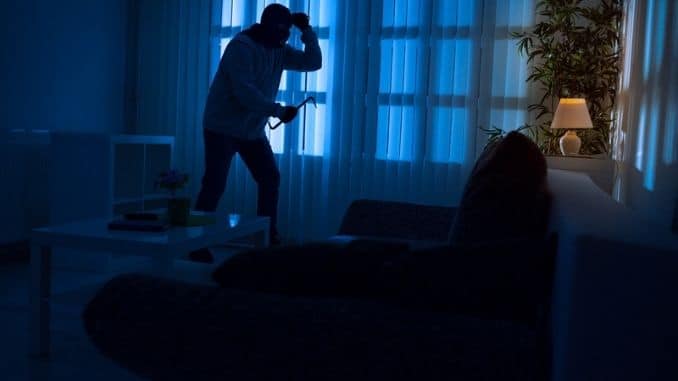
Our homes are our sanctuaries. We go home to relax and recover, to spend quality time with our families, and to feel safe and comforted.
No one wants that feeling of safety destroyed. Unfortunately, it happens every day. According to the Federal Bureau Investigation (FBI), there were nearly 7 million property crimes in 2019 in the United States, including burglaries, larceny-thefts, and motor vehicle thefts. Many of the criminals got away, with arrest rates far below the incident rates.
When looking at burglaries alone, the FBI states there were an estimated 1,117,696 of those in 2019, and that over half of those involved forcible entry. Victims suffered an estimated $3.0 billion in property losses.
Summertime is the most popular time for home burglaries. On average, they rise about 10 percent between June and August. To help keep your home safe this summer and all year long, consider these tips.
1. Think Like a Burglar
Security experts say this is one of the best ways you can detect holes in your home security. Take a walk around your place and imagine that you’re a burglar. Look for easy-access points, low windows, unlocked doors, or high shrubs where you could hide.
Ask yourself these questions:
- Could a burglar see expensive items inside, like technological or stereo equipment?
- Are there expensive items outside that would be easy to snatch? (grills, bikes, machinery)
- Are there tree limbs that could grant easy access to a higher level?
- Does the home have “dark areas” without lighting where a burglar could pause without being seen?
Write down all the potential weaknesses you see, then take action to address each of them.
2. Use Lights
Intruders like the dark as it gives them an easy way to remain unseen. The more lights you have around your home, the safer you’re likely to be. Keep the front porch light on, and make sure each side of the house is lighted. If you need to, install a solar light or lamppost, or encourage your neighborhood to install more lights.
Motion sensor outdoor lights are a good deterrent as they let the burglar know that he or she has been detected. Be sure, too, to leave on one or two lights when you’re away from home so that the home still appears occupied.
3. Don’t Forget to Lock Everything
You know that this is a good idea, but it’s easy to forget sometimes, particularly if you’ve lived in your home for years. Yet a burglary can happen anytime, and you’ll never expect it. According to the Bureau of Justice Statistics, 27 percent of entries into a home occurred through an open window and 28 percent through an unlocked one.
Make a habit of ensuring everything in your house is locked while you’re inside and when you’re gone. If you need to keep a window open for ventilation during the summer months, choose one that’s hard to get to from outside or use a night lock on it. Some casement windows are fitted with a secondary locking point, which allows you to lock them in a slightly open position. You can also purchase vent or window locks separately.
Speaking of locks, be sure to consider all those people who may have keys to your home. What about the previous owners? Even if you trust them, you may not trust anyone they could have given copies to. Always change the locks after moving into your home and replace any that are old or structurally weak.
4. Be Careful with Hidden Keys
Hiding a key somewhere around your home can help you get back in should you lose or forget your keys, but it may also increase your chances of a home robbery. Criminals are well aware of this practice and will often search for a hidden key before trying to get in another way. They may also watch the home for many days or weeks before robbing it and may see where you keep your spare key.
You can still use a hidden key, but make sure there is no one around watching when you place it and put it somewhere unique that a criminal would not think to check. You may also want to leave it with a neighbor.
5. Rethink Your Garage Remote
Do you keep your garage door remote opener clipped to the visor of your car? If your vehicle is parked outside, this gives thieves an easy way to get in. Instead, consider keeping your remote with you on a keychain, or use a smart garage door opener that opens from your smartphone. (Just be sure it’s secure!)
6. Consider Installing a Fence
If you don’t have a fence around your home, it may be time to think about getting one. A fence can be an excellent way to keep unwanted visitors off your property. It provides one more barrier for a burglar to overcome and can be enough to make them decide to go somewhere else.
Choose an open chain-link or ornamental metal fence type secured into concrete so that someone can’t lift it. Solid fences can be easier to climb and also offer thieves places to hide, so they’re not as effective.
7. Use Technology
With recent advances in technology, we have more choices of security systems than ever before.
- Security cameras: Just the sight of one of these is often enough to deter a burglar. If a home invasion does occur, your video footage can be used to provide the evidence needed to catch and prosecute the intruders. Look for those with day and nighttime lenses as they typically work best. Most act like motion-detection lights and will come on and start recording when they sense movement.
- Video doorbell camera: You can add another layer of protection with a video doorbell camera, also called a smart doorbell. It allows you to see who is at the door, as well as to communicate with them. That means you won’t be at risk of letting a stranger in. These also help detect and deter intruders and people who may try to steal your packages.
- Door sensors: It can be unnerving to go to sleep at night in your home. What if someone comes in and you don’t hear them? A door sensor can solve that problem. It will ring each time the door is opened and closed, alerting you if an intruder happens to break in. Some can be attached to your home security system, and will automatically alert the local authorities when tripped.
- Home security system: These have been around for a long time, and for good reason—they work. They keep your property and those inside it protected not only from burglary and home intrusion but from fire and other environmental disasters as well. They may be more expensive than the other options, but they can save you a lot in the end, too. According to one UNC Charlotte study, almost 83 percent of burglars looked for signs of a home alarm before deciding to rob a place, and more than half decided to give up if they saw one.
8. Get to Know Your Neighbors
Though getting to know your neighbors used to be a common thing, it’s less likely now in the age of smartphones and social media. Yet presenting a united front, so to speak, can help decrease the likelihood that your home will be robbed. Neighbors can watch out for neighbors and report anything that looks suspicious.
If you plan to be away for a while, neighbors can also come in handy when it comes to collecting your mail or keeping an eye on the place. Someone willing to bring in the trash can make the difference between your home looking lived in or empty.
9. Leave Social Media in the Dark
Never advertise on social media that you’re away from home. You may be tempted to post selfies of you and your family by the beach, but this is a clear advertisement to criminals that you are not around.
Even if you trust your connections, it takes only one friend sharing your post with other friends to make your home a potential target. Save the sharing until you get back home.
10. Secure Your Valuables in a Safe
Sometimes despite all your precautions, the worst occurs and your home is robbed. Most of us keep our valuable documents and jewelry in drawers and keepsake boxes, but this is where criminals will look first.
Purchasing a safe will give you one more layer of protection against thieves. It won’t completely protect your items from being taken, but it may be enough to encourage criminals to go after easier targets. A fireproof safe can also protect your valuables in case of a fire.
Place the safe somewhere that it will be well concealed, then put these types of things inside:
- Jewelry
- Extra cash or other money-related items
- External hard drives and other important technology
- Important documents, including passports, birth certificates, and social security cards
- Anything else that’s irreplaceable
No home is impenetrable, but taking just a few simple security measures can decrease the likelihood of you ever falling victim to thieves. Without doubt, most would-be burglars will choose the path of least resistance, so extra lighting, locks, cameras, and awareness act as a strong deterrent. Taking these steps will ensure you feel safe and secure in your home for years to come.
Just the thought of your home being at risk can be incredibly stressful. Learn safe and simple strategies to protect yourself from the harmful effects of stress here.




